We have a strict honesty policy, but please note that when you buy through our links, we may earn a commission. Learn more.
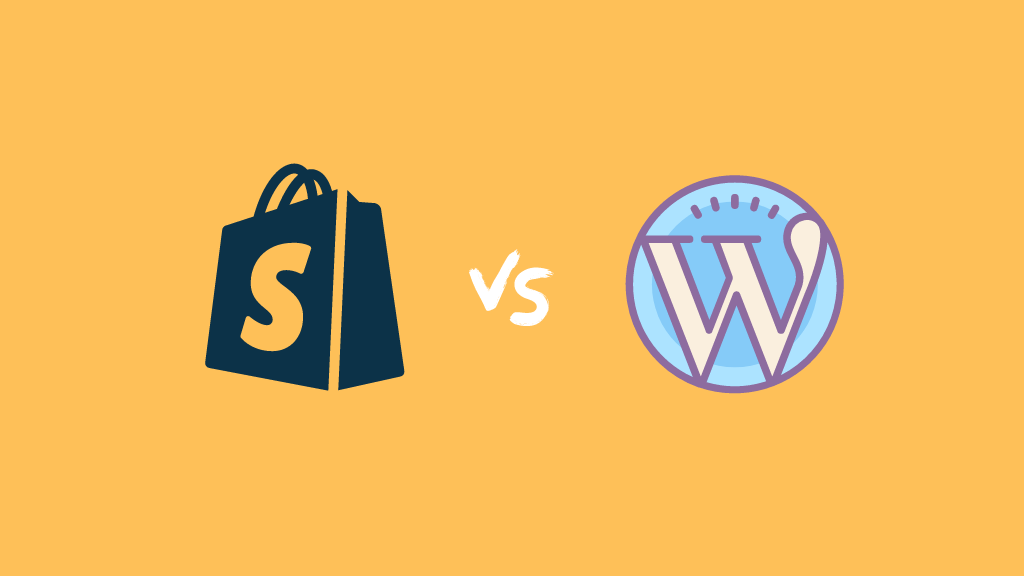
Shopify vs WordPress: which is better for building your online business with? In this in-depth comparison, I’m going to break down the pros and cons of two of the most popular solutions for creating an online store — and help you work out which is right for you.
First up you’ll find a quick summary of key reasons to use either platform over the other; this is followed by a deep dive into both tools.
Shopify vs WordPress — quick comparison
| Key reasons to use Shopify | Key reasons to use self-hosted WordPress |
| Easier to set up and quicker to get going with | It’s free (but remember that you’ll need to buy hosting to run it) |
| Wide range of ecommerce features provided out of the box — WordPress requires installation of plugins to sell | It’s a more flexible platform |
| Hosting included | More powerful CMS |
| No security or maintenance issues to worry about | Vast range of free templates and plugins available for it |
| Bundled email marketing features | Gives you more control over technical SEO |
| 24/7 support provided | Much better for blogging with |
Free trials and downloads
I’ll begin my full comparison with a bit of background about both platforms.
Shopify overview
Shopify is a web application that has been specifically designed to allow merchants to build and launch their own online store easily. It’s one of the best-known ecommerce solutions on the market, used to power an estimated 4.9 million online websites (source: Builtwith.com).

Its key goal is to let users without any technical or design skills create a store themselves; you don’t need any coding knowledge to use the platform. Instead, you simply choose a pre-designed template, customize it a bit, add some products and in theory you’re ready to start selling.
However, Shopify allows you to edit the HTML and CSS of your website, which means that those who do have coding skills will be able to customize their stores more extensively.
Importantly, because Shopify is a ‘hosted’ solution, everything runs on Shopify’s servers. So, you don’t need to worry about buying web hosting or installing software anywhere — the idea is that pretty much all you need to build and run your store is available ‘out of the box.’
(That said, you can customize a Shopify store to meet more bespoke requirements through the addition of apps — more on this later).
Shopify is a software as a service (‘SaaS’) tool — this means that you don’t own a copy of the software, but pay a monthly fee to use it. And, being a web application, Shopify runs ‘in the cloud’ — so, as long as you have access to the Internet and a web browser, you can manage your online store from anywhere.
Now let’s take a look at how WordPress works.
WordPress overview
There are actually two different versions of WordPress available:
Between them, they power over 34.3 million sites — with estimates suggesting that around 23% of the top 1 million sites on the web use it as a content management system (source: BuiltWith.com).
Let’s take a quick look at the difference between the two versions.
Hosted WordPress
Hosted WordPress — available at wordpress.com — is, like Shopify, a software as a service (SaaS) tool. For a monthly or annual fee, Hosted WordPress gives you access to a broad range of features that let you build and maintain a simple blog, website or ecommerce site.
The monthly fees are as follows:
Monthly prices:
- Free — $0
- Personal — $9
- Premium — $18
- Business — $40
- Commerce — $70
(Significant discounts are available for the above plans if you pay upfront for one, two or three years.)
The ‘Business’ and ‘Commerce’ plans are the best ones to use if you want to sell products — this is because they facilitate the addition of ecommerce plugins (in the case of the ‘Commerce’ plan, some other ecommerce tools are also provided ‘out of the box’).
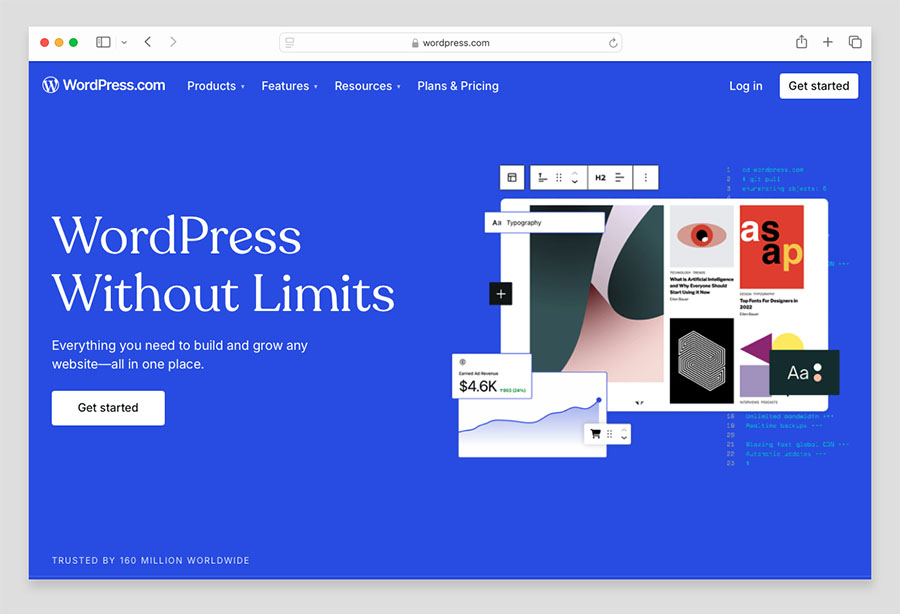
Self-hosted WordPress
Self-hosted Wordpress is a piece of software that you download from wordpress.org and then install on your own web server. It’s open source, meaning that the code behind it is freely available and may be easily edited.
In practice, this means that sites built with WordPress can be customized to a huge degree — it’s an extremely flexible platform that, in the hands of the right website developer, or via the installation of the right plugins, can be adapted to meet the requirements of nearly any web design project.

You can install WordPress on your server for free — but there are hosting costs, domain registration charges and potential development costs to consider.
(I discuss all these in more depth later on in this post.)
Now, this Shopify vs WordPress comparison is going to focus on the self-hosted version of Wordpress. My aim in doing so is to show you how an ‘all-in-one’ hosted solution (Shopify) compares to an open-source platform requiring more hands-on configuration (WordPress). It also reflects the fact that most professional WordPress ecommerce websites involve the self-hosted version.
That said, many of the observations in this comparison can be applied to hosted WordPress too — especially those involving content management capabilities.
What sort of users are Shopify and WordPress aimed at?
Shopify’s core audience typically consists of users who are lacking two things:
web development skills
a budget to hire somebody to build their store.
Those types of users often turn to Shopify because the platform allows them to create an online store without coding — and, significantly, because using it doesn’t require a big upfront investment.
WordPress, by contrast, caters for a wider group of users, namely:
- web design novices
- users with web development skills
- users with the budget to hire a developer.
Like Shopify, WordPress can be suitable for users who are relatively new to web design but not particularly tech-savvy. It is certainly possible to create and maintain a WordPress site without coding skills — particularly if you’re happy to use a ‘visual editor’ interface for WordPress like Divi or Elementor.

However, I’d argue that in most cases, more configuration of WordPress is needed before you can publish a website — and that depending on what you want to do, setting up a WordPress site can involve a steeper learning curve than building a Shopify store.
The second audience that WordPress caters for is users who have a lot of web development experience — they’ll be totally fine using WordPress to create the site they need.
And the third audience is users with a large budget — this money can be used to hire a WordPress development team to build an entirely ‘bespoke’ website that runs on super-fast servers.
The word ‘bespoke’ is important here, because it underlines a key difference between WordPress and Shopify — that although it’s possible to modify Shopify in quite a lot of ways (through coding, or the addition of apps), there are more limits to what you can do and you are always going to have to host your site on Shopify’s servers.
Have you seen our Shopify vs WordPress video comparison?
Now, let’s take a look at pricing.
Pricing
Shopify costs
There are five Shopify pricing plans available (prices below are US ones, listed in USD, but the plan names and pricing are consistent in other countries).
- Starter: $5 per month.
- Basic: $39 per month.
- Shopify: $105 per month.
- Advanced: $399 per month.
- Plus: negotiable, but usually $2,300 or $2,500 per month, depending on whether you pay annually or on a 3-year basis.
Paying upfront for a year on certain plans reduces your fees — when you do this, the ‘Basic,’ ‘Shopify’ and ‘Advanced’ plans work out at $29, $79 and $299 per month.
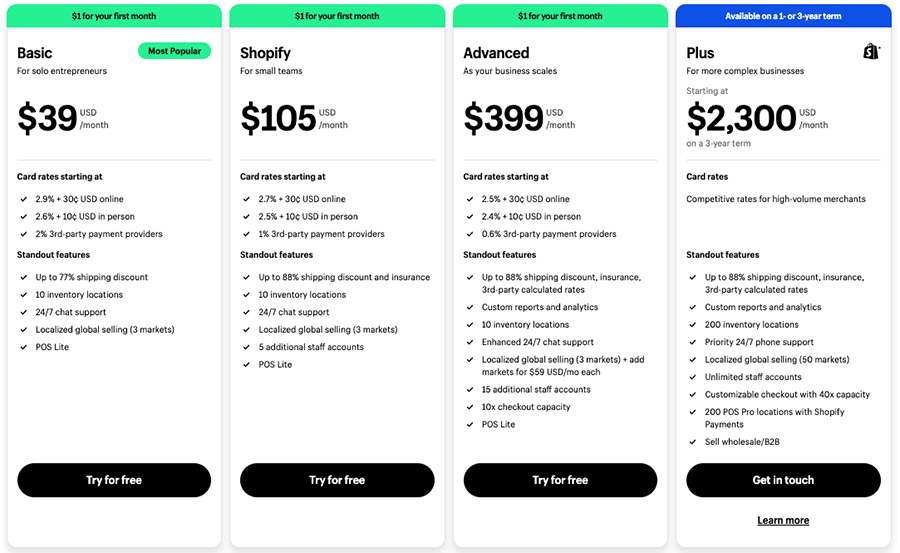
There is also a free Shopify trial available. This lasts for three days, which is quite a short amount of time by comparison to competing tools. However, for a limited period, Shopify is testing a new trial system, which lets you extend your Shopify trial to 3 months at a cost of $1/mo. You can access the extended trial option via this special link.
As you might expect, the features you get access to on each Shopify plan vary according to the one you’re on, but a few key differences to be aware of are as follows:
- The ‘Starter’ plan allows you to display products on a very basic storefront, sell products on an existing site or social media presence and sell in physical locations, but you don’t get a standalone, fully-customizable store on this plan.
- The number of users who can access your account varies by plan (you get 1, 5 and 15 staff accounts on the Basic, Shopify and Advanced Shopify plans respectively).
- Credit card fees and transaction fees decrease as the monthly plans become more expensive.
- To get the most out of point-of-sale functionality, which lets you use Shopify to sell in physical locations, you may need to pay for a ‘Shopify POS Pro’ add-on ($89 per month, per location).
- You get more sophisticated international selling features on the ‘Advanced’ plan or higher.
- The ‘Shopify Plus’ plan is an enterprise grade plan aimed at larger organisations, or those with more advanced requirements regarding APIs, server uptime, task automation and support.
WordPress costs
It’s considerably harder to say how much a WordPress site costs to build. This is because there are a lot of variables involved.
A common misconception is that WordPress is an entirely free option, but in many cases – particularly where business websites are involved – this is not really the case.
Although you can get the WordPress content management system (CMS) software for free, there are other things you’ll often need to pay for to get a WordPress-powered website off the ground, namely:
- hosting — server space on which to install the WordPress CMS and store your site’s content
- a template — the design or ‘theme’ for your site
- an ecommerce integration — addition of tools that will let you sell products online
- plugins — apps that can be installed on your site to add more functionality.
And of course, depending on your ambitions or technical skills, you may also need to pay for a developer to assist you with the build.
The one thing you’ll always have to pay for is WordPress hosting — without it you have nowhere to install WordPress. There is a wide range of options available on this front, but the basic choice you’ll have to make is whether you’d like to use:
- a general-purpose or ‘shared hosting’ company (for example, HostGator or Hostpapa); or
- a ‘managed WordPress’ hosting provider (for example Kinsta or WP Engine) that specialises exclusively in WordPress hosting.
Managed WordPress hosting will typically give you a considerably faster and more secure website, but it is more expensive.
If using shared hosting, you can expect to pay just a few dollars per month for it — considerably less than the $35 or so monthly fee you’ll normally encounter with managed Wordpress hosting (based on Kinsta or WP Engine costs).
Shared hosting can be okay for personal or small-scale projects — but business users are always much better off using managed Wordpress hosting.
With regard to the other factors, you can technically get away with using free templates, ecommerce integrations and plugins — but to get higher-quality results, it’s usually worth investing a bit in your site and choosing paid-for versions.
Below you’ll find some ballpark estimates of costs that you might face if you were building a WordPress site yourself:
- Annual hosting, using managed WordPress hosting from Kinsta or WP Engine as an example: $350 (annual recurring cost)
- Premium theme: $175 (one-off fee)
- Annual cost for an ecommerce integration (using Ecwid as an example): $300 (annual recurring cost)
- 4 paid-for WordPress plugins: $100 (annual recurring cost)
- A WordPress maintenance service for managing security: $600 (annual recurring cost).
So, based on these example figures, you’d be looking at an annual recurring cost of at least $1,302 to run a professional WordPress site.
If you were to use a developer to help you configure, build and maintain your WordPress site, you’d have significantly higher costs — but in all likelihood would be getting a much better product.
In terms of how these sorts of costs compare to using Shopify, again we’re looking at a ‘how long is a piece of string’ scenario!
But I’ll try to come up with some examples…
- At the lower end of the pricing scale, assuming you’re using the Shopify $39 ‘Basic plan’ plus one $10-per-month app, you’d be looking at a $588 annual commitment.
- At the higher end of things, if you were on the Shopify $399-per-month ‘Advanced’ plan and using three $10 per month apps, you could end up spending $5,148 per year on your site.
If your needs are simple then, using Shopify can actually work out cheaper than using WordPress — despite it being the ‘paid-for’ option and WordPress being the open source one. But equally, it can work out a lot more expensive — it really depends on how you set both platforms up!
The only way to work out which is more economical for you in the long run is to make an exhaustive list of all your requirements and price them up for each platform as best as you can.
Pricing, however, should not be the only thing you think about in your WordPress vs Shopify decision-making process. It’s just as important (if not more important) to look at how the platforms compare in terms of functionality and features.
I’ll do that now, starting with the visual aspect of things.
Templates
Quantity and quality
A key concern of anyone running an online store is how professional it looks.
To help you craft an attractive website, ‘themes’ are available for both Shopify and WordPress — customizable templates that you can use as a starting point for your site’s design.
Shopify offers a reasonably wide range of themes – at time of writing, I counted 13 free themes and 217 paid-for themes in the Shopify theme store.

And many of the paid-for themes — which range between $100 and $500 in price — come in two or three variants, making the number of templates provided larger than the above figures suggest.
All the Shopify themes are professionally designed and easily edited. Importantly, they’re also responsive, which means they’ll automatically adjust themselves to display appropriately on any type of device – mobile, tablet, desktop computer etc.
And you can be pretty confident of solid customer support for these templates (which you’ll receive from Shopify in the case of the free templates, or a Shopify-approved supplier in the case of the paid-for ones).

If that range of templates isn’t enough, you can buy other ones from third-party Shopify theme designers — popular options on this front include Shoptimized and Theme Forest.
However, the number of Shopify templates available is absolutely dwarfed by the enormous number of templates available for WordPress. Although it’s hard to put a precise figure on the number of WordPress themes in existence, we can confidently talk about thousands, both free and paid-for.
You can source WordPress templates from the official WordPress theme directory, or third-party stores like Template Monster. At time of writing, the former contains over 13,000 free themes.
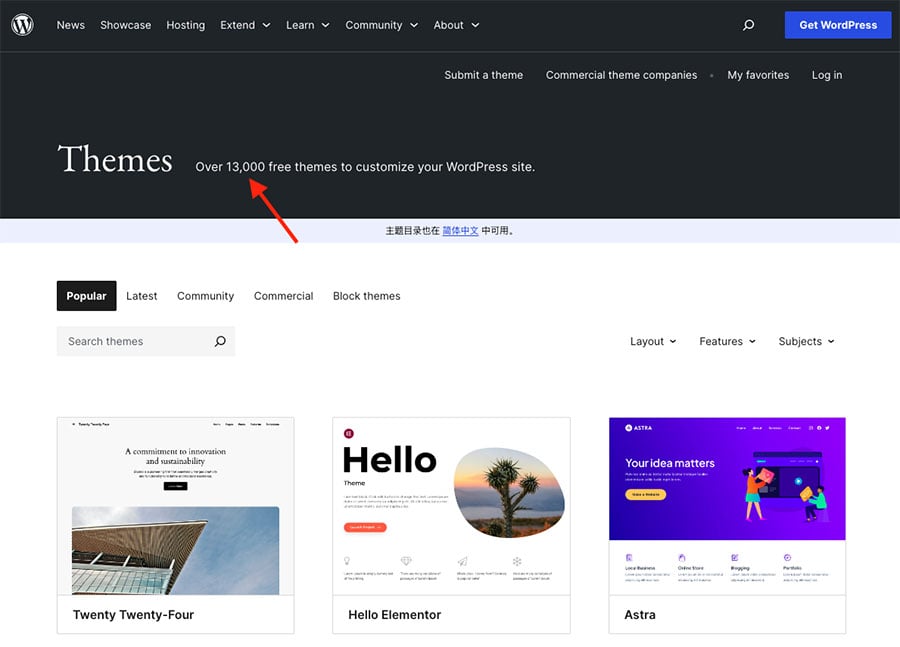
Now, because Shopify is designed very much with non-technical users in mind, the Shopify templates are a bit easier to customize — but configuring a well-constructed WordPress template shouldn’t involve too much of a learning curve.
For me, WordPress is ultimately the winner in a template shoot-out — the sheer quantity of themes available ensures that most users will have plenty of high-quality options to choose from.
This wide choice does present a couple of downsides however, because:
- it will be harder to choose a template
- you need to ensure that you choose a ‘safe’ one.
Getting a ‘safe’ template means sourcing it from a reputable source — some WordPress templates contain malicious code that can compromise the security of your site.
This is not something you really need to worry about at all with Shopify templates, so long as you buy your template from the official Shopify theme store.
(If buying a Shopify template elsewhere, my health warning about malicious code applies here too, of course).
Behaviour / performance on mobile
As discussed above, all the officially-supported Shopify templates are responsive, meaning that they will all adjust themselves automatically so that they display correctly on any device.
(You might be surprised to learn that not all competing platforms offer truly responsive templates — Wix being a key example.)

In this day and age, it’s highly unlikely that you’ll be dealing with a WordPress template that isn’t fully responsive, especially if you’re sourcing one from the WordPress theme directory. However, if you are buying one from another theme directory — or coding one yourself — you should double check its suitability across devices before using it.
Now, let’s take a look at ease of use.
Interface and ease of use
The basic layouts of the Shopify and WordPress interfaces are similar enough, in that the left-hand side of the screen displays a menu from which you select pieces of content to edit or settings to change.
Shopify’s interface is arguably slightly more contemporary and ‘clean’ in appearance, however.
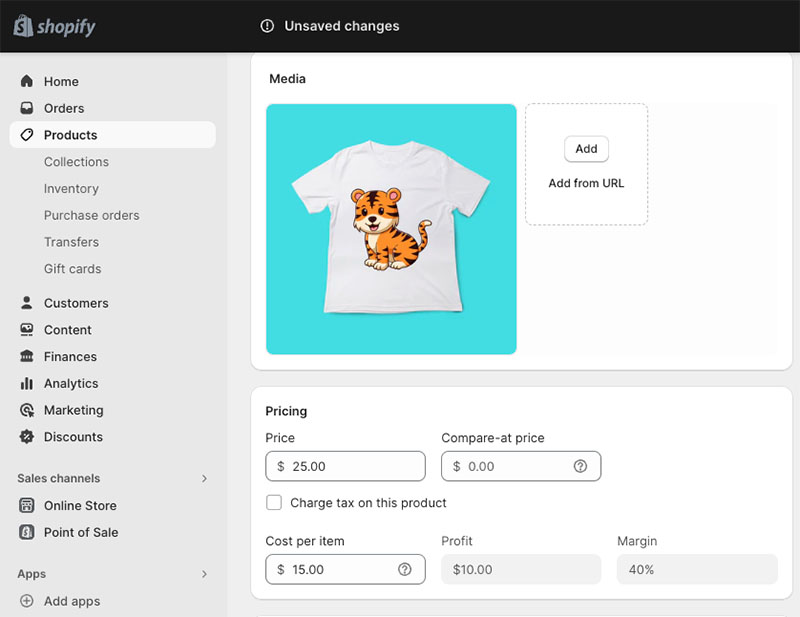
Both platforms also take a similar approach to content editing and publishing – you locate your content and edit it in the back end first and, when you’re done, you can preview or publish it.
This differs from the approach taken by some other platforms – notably Squarespace – which display a more ‘instant’ or real-time view of your edits (this is because such platforms allow you to work ‘on page’, with your changes being displayed in situ and in real time).
However, you can use visual editor plugins in WordPress (like Divi or Elementor) to create a similar real-time editing interface; this may appeal to people who are relatively new to web design.
The thing to watch out for here though is ‘bloat‘ — some of these visual editors can really slow down your website by adding unnecessary or badly-written code to proceedings. This in turn can have a negative impact on SEO and usability.
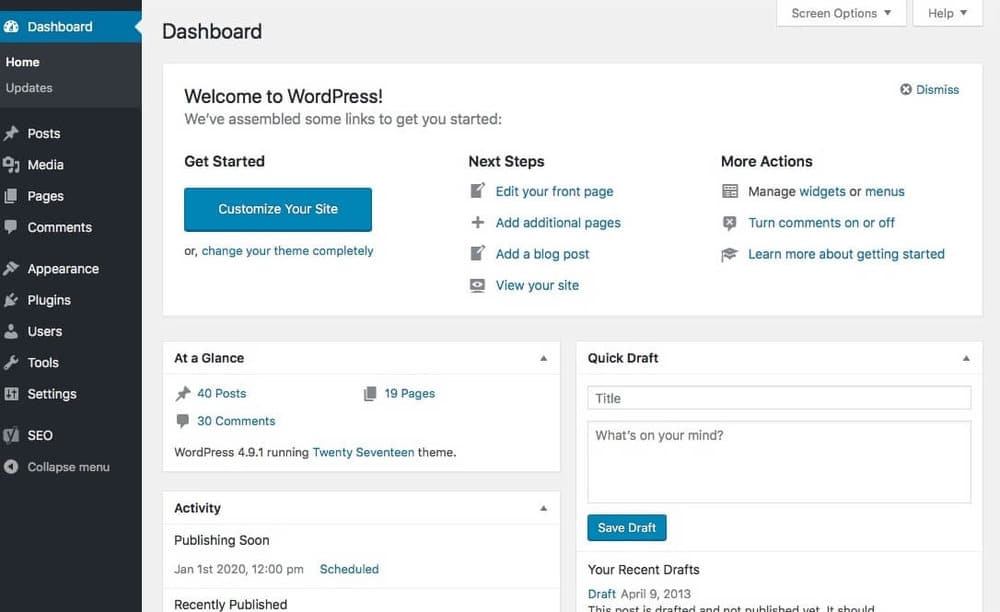
Shopify’s interface is very intuitive for anyone aiming to build and manage an ecommerce store – and this shouldn’t come as a surprise really, because the platform has been designed with these goals entirely in mind. With Shopify, you can manage products, collections and sales channels with ease.
It’s hard to make a direct comparison with WordPress on this front, because in order to sell products, you will need to make use of a third party plugin like Ecwid, WooCommerce or Easy Digital Downloads.
I’ll discuss these options in more depth later on in the review. But first, a look at content management.
Content management in Shopify and Wordpress
When it comes to the management of static pages and posts, I’d argue that WordPress beats Shopify fairly comprehensively.
First, WordPress comes with revision history features — older versions of a page or post can be stored in its content management system and you can roll back to any of them at any point.
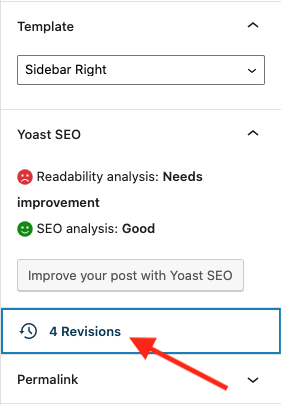
Shopify doesn’t let you do this (unless you’re happy to pay for a third-party archiving / backup tool like Rewind).
Second, WordPress allows you to use categories and tags in a much more flexible way than Shopify (and you can also create your own custom content types in WordPress). This allows you to present your site content in more relevant ways to users, who can also filter it more easily to meet their needs.
Both WordPress and Shopify now let you use drag-and-drop editors to manage your content. This is a relatively recent development for the two platforms — for many years, they both made use of fairly basic What You See is What You Get (WYSIWYG) editors that let you work with text and images in very ‘static’ ways.
In the case of WordPress, you can use its Gutenburg layout tool to create and move content blocks (paragraphs, images, forms, videos etc.) easily around a page.
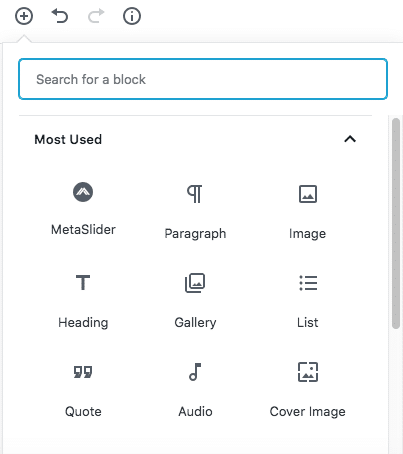
Shopify’s “Online Store 2.0” theme format, which has been rolled out over the past couple of years, now features a similar drag-and-drop editor. However, unlike Gutenberg, it doesn’t technically let you drag content around individual pages – instead, you use it to edit template layouts that are then applied to pages (the text content of which is still edited in a WYSIWYG editor).
You get used to this approach, but it’s a bit confusing initially. (And it’s worth noting that Shopify’s blog editor remains a very basic, WYSIWYG affair — it’s completely trounced by the blog-editing features offered by WordPress.)
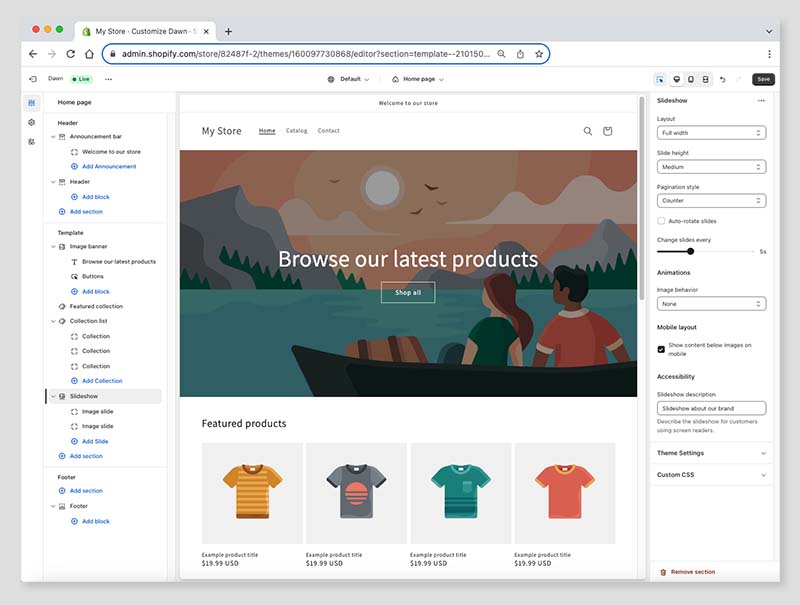
Using AI to help you create content in Shopify and WordPress
Shopify now features an AI-based content creation feature — ‘Shopify Magic’ — that aims to make the process of creating website copy easier.
A key application of this feature is to speed up the creation of product descriptions. You enter your product’s features and keywords into a product description field and pick a ‘tone of voice,’ and a product description based on this input is then generated.
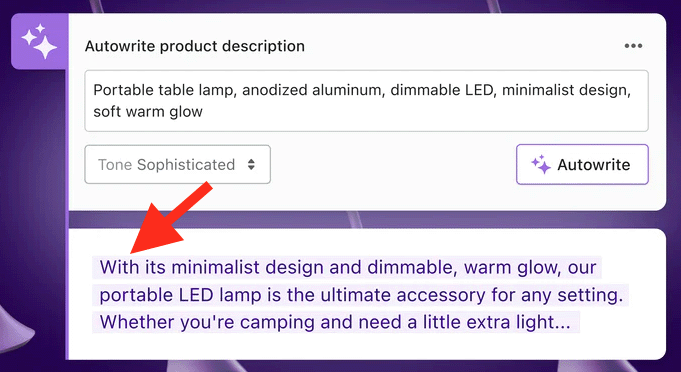
The feature can also be used for writing general page copy too, and even image background removal and generation.
As things stand, there isn’t a built-in content-generation tool available in WordPress, but you can use free external AI tools to help you out with copywriting. Alternatively, you could install a WordPress AI plugin — quite a few of these are available, including the ‘AI Engine‘ and ‘AI Power‘ plugins, both of which are powered by ChatGPT.
Flexibility
Of the two products under discussion, WordPress is technically the more flexible of the two. It’s been around much longer and is more widely used as a platform than Shopify, meaning that the number of templates, plugins and integrations for the platform is much larger than the equivalent ranges available for Shopify.
As discussed earlier, there are currently over 12,000 templates available for WordPress in its theme directory; and there are over 59,000 plugins available in its plugin directory.
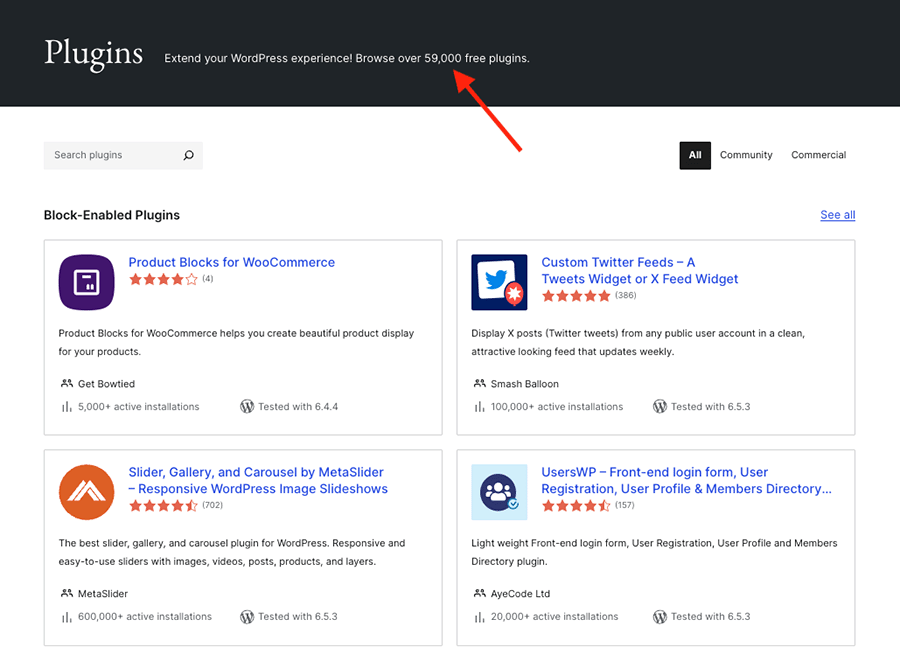
Additionally, the open source nature of the platform and the fact that you have total control over your own hosting means that WordPress can be manipulated to create bespoke websites more easily than Shopify.
That said, Shopify’s app store contains an impressive number of apps (there are 13,000+ available) which allow you to significantly and easily extend the functionality of a site built on the platform.
📚 Related resource: Best Shopify apps for beginners
You also get access to your store’s CSS and HTML on all $39+ Shopify plans.
For most users, this combination of apps and code access will provide more than enough flexibility, but if more control is needed over proceedings, the Shopify Plus plan — which provides more comprehensive access to the inner workings of Shopify and its checkout process — is worth investigating.
Now, let’s drill down into ecommerce functionality in Shopify and WordPress.
Ecommerce functionality in Shopify and WordPress
Many readers of this Shopify vs WordPress comparison will be looking specifically at how the two platforms compare when it comes to ecommerce functionality.
And frustratingly, it’s difficult to come up with definitive advice on this. This is because – and as discussed earlier – self-hosted WordPress doesn’t have any built-in ecommerce features. You have to use a third-party tool to add them.
You could argue that this gives Shopify an immediate advantage when it comes to ecommerce, because it’s a dedicated online store builder, with pretty much everything you need to get your store up and running provided out of the box.

For a full overview of all the ecommerce features you get in Shopify, I’d suggest reading our full Shopify review. But for the purposes of this comparison, I’ll just say that Shopify is one of the most solid, fully-specced options available for building an online store.
The key benefits of using Shopify to build an ecommerce website are as follows:
- Setting up and managing an online store with Shopify is very easy.
- The Shopify dropshipping options are extensive — the platform lets you work with a huge number of suppliers.
- The built-in point-of-sale features (which let you sell products in physical locations) are extremely strong.
- The automatic tax calculation features are a huge time saver for merchants.
- Thanks to its new ‘Shopify Markets’ feature, Shopify facilitates multi-currency selling extremely well.
The key negative aspects of Shopify are as follows:
- If you intend to sell products that come with a lot of options, Shopify is not as flexible as it could be — although you can sell an unlimited number of products, each can only come in 100 variants and with a maximum 3 options (that said, apps do exist which remove these limits, and Shopify plans to increase the variant limit to 2,000 in 2025).
- Capturing custom data and facilitating file uploads via non-standard fields (for inscriptions, messages etc.) is not terribly straightforward.
- If you need multi-user access to your Shopify store, you may have to pay quite a lot for it. Its more affordable plans only come with one seat, and even its more premium plans don’t give you many (you get 5 seats on the $105/mo ‘Shopify’ and 15 on ‘Advanced’).
Quite often in Shopify, you have to buy a third party app to get the functionality you need. This usually means additional, ongoing monthly costs.
While Shopify is definitely an excellent ‘all-in-one’ solution for building an online store, you could argue that the ecommerce options are ultimately more extensive with WordPress, because you have much greater choice regarding the exact technical solution used for online selling.
To add ecommerce functionality to a WordPress site, you can choose from a wide-range of ecommerce plugins. Some of the best known include:
In fact, there’s also the option of using the Shopify platform as your ecommerce plugin for WordPress – its $5 per month ‘Starter’ plan allows you to embed products and place a simple shopping cart system on an existing WordPress site.
If you’re going down the WordPress route, it will be a case of trying to do your own research to work out which is the best fit for you — but our Ecwid review and our WooCommerce vs Shopify comparison may help you with this.
To help you with the process of adding ecommerce to a WordPress site, here are a few key questions to ask yourself when evaluating a particular ecommerce plugin:
Is the pricing of this solution competitive?
Is it easy to use?
What payment gateways can I use with it?
How many product variants and options can I use?
What are the SEO features like?
- Is it good for dropshipping?
- How well does it cater for print on demand selling?
Does it facilitate point-of-sale transactions?
Does it facilitate selling in multiple currencies?
Is there a mobile app available for it?
For the record, Shopify scores highly on all these fronts – except where product variants and options are concerned. As discussed above, the limits involved here are not generous, but you can use an app from Shopify’s app store to increase flexibility on this front.
Marketing and SEO features
SEO in Wordpress and Shopify
Search Engine Optimization (SEO) is absolutely vital to the performance of any website.
Without good visibility in search results, you can struggle to get significant traffic or sales. Yes, you can use Adwords or social ads to drive traffic to your site — but a strong placement in organic search results is in many cases vital to the long-term success of an online business.
The main advantage of WordPress from an SEO point of view is that its technical SEO setup can be configured exactly the way you want it to be.
A key example of this involves hosting. Because a WordPress site can be hosted on any server, you can choose an extremely fast one that gives you lightening-fast ‘page speed’ — Shopify, whilst operating on fast servers, doesn’t give you this flexibility.
As page speed is a ranking signal, with faster sites often getting preferential treatment in Google search results, the option to create your own ultra-fast hosting setup can be very beneficial.
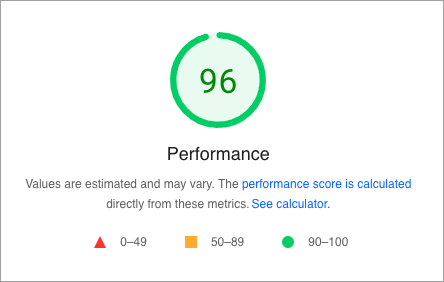
And, because of its open source nature, you can code your WordPress site so that it follows all of Google’s SEO recommendations in full, including Google’s Core Web Vitals guidelines (a set of targets relating to the speed, responsiveness and visual stability of a website – sites that meet them can receive preferential treatment in Google search results.)
So, where general content is concerned, it’s definitely possible to create a really good SEO setup for WordPress — so long as you or your developer have the technical skills to do so.
How good the ecommerce SEO side of things is in WordPress, however, depends very much on your chosen ecommerce solution. When you’re deciding which one to go for, some key things to watch out for are:
- how editable the titles, meta descriptions and alt text are on your product pages
- how search-friendly you can make the product page URLs
- whether or not you can create 301 redirects for product URLS
- how fast your product pages load.
You should ensure that the plugin you use to handle ecommerce on your Wordpress site is robust with regard to all of these.
Turning to Shopify, the SEO features are strong.
Using SSL is straightforward; editing alt tags and meta descriptions is a simple process; you have full control over robots.txt; XML sitemaps are created for you; 301 redirects are automatically created / suggested every time you change a page name…all really good stuff.
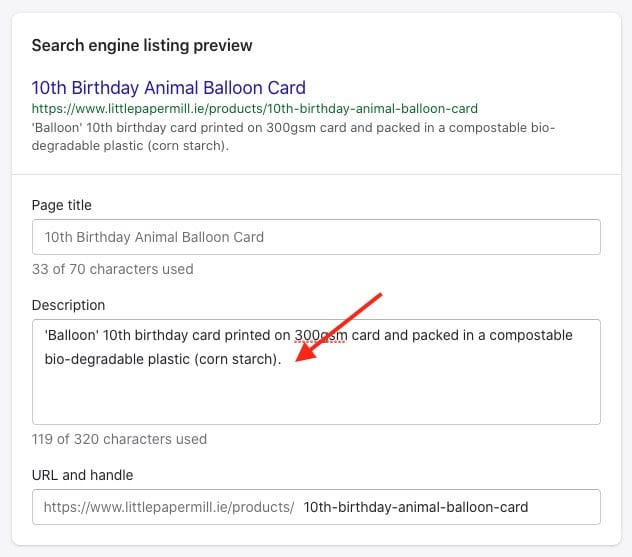
There’s also a ‘Web Performance Dashboard’ report available from Shopify that helps you improve your site speed — this lets you see how you are doing with regard to meeting Google’s Core Web Vitals standards (and helps you identify ways to do so).
And, unlike other online store builders, you can now use the excellent Yoast SEO tool on a Shopify site – for a long time, this was a WordPress-only product.
(The only thing you should bear in mind here is that you can use Yoast for free in WordPress, but not in Shopify — a $19 per month fee is involved in using it.)
My take on SEO in a Shopify vs WordPress debate is that technically, WordPress can be the winner — but only if you’ve configured your site correctly and are using high-quality hosting.
There’s less flexibility available when it comes to technical SEO in Shopify and you get no say over hosting, but overall, the platform is very robust from a search engine optimization point of view. And because so much of the SEO setup is pre-configured for you, there’s arguably less to go wrong from an SEO point of view in Shopify.
📚 Related SEO resources
For more in-depth information on SEO, I recommend reading our Shopify SEO tips for Shopify-specific advice, along with our general tips on how to increase your site’s visibility on Google.
Our comparison of Ahrefs vs Semrush — two of the web’s leading keyword research tools — may also be useful, as may our Semrush review and Ahrefs review.
Blogging in WordPress and Shopify
Blogging is an often overlooked — but vitally important — aspect of running an online store. This is because it is absolutely essential to successful inbound marketing – a sales strategy where you use quality blog posts to drive traffic to your site (which in turn helps generate purchases made by engaged readers).
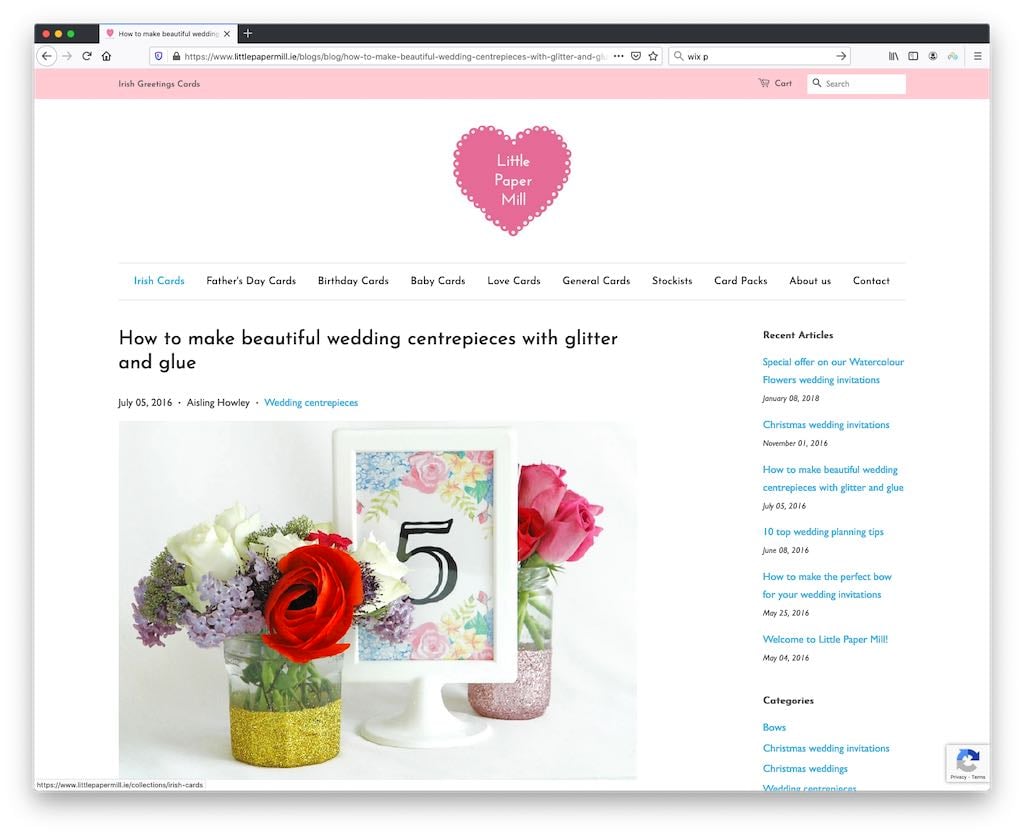
Both WordPress and Shopify provide blogging functionality, with WordPress’ being significantly better.
This is because WordPress:
- gives you more control over your blog’s contributor types
- autosaves your content
allows you to keep an archive of changes to existing posts
allows you to use categories and tags in blog posts (Shopify just permits use of tags)
- lets you make use of a drag and drop editor to create your posts
- lets you create author pages.
WordPress’ superiority here isn’t surprising really, as it has a long history as a professional blogging solution (and indeed started life as a blogging platform).
That said, I’ve used Shopify to blog effectively in the past — it’s definitely possible to get posts created with the platform to rank highly in search results. And a number of blogging apps exist for Shopify that enhance its capabilities in this area.
But even so, it’s a definite win for WordPress here — in truth, it’s arguably the best blogging platform going.
Email marketing
A core part of running an online business is email marketing — creating e-newsletters and sending them to your mailing list is often essential to generating sales.
To this end, Shopify has introduced a feature called ‘Shopify Email,’ which, as its name suggests, allows you to perform email marketing directly within the Shopify interface.
This is easy to use and will definitely prove useful for some merchants, particularly those who like to manage all aspects of their online business in one place.

At time of writing, 64 e-newsletter templates are available for the tool, and these can all be edited to meet your branding requirements (if you like, you can even code your own Shopify Email templates).
For me though, the best thing about Shopify Email is its price. You can send up to 10,000 emails for free using it — and if you go over that limit, you can expect to pay an additional $1 for every 1,000 emails you send.
(Discounted rates are available for high-volume senders — those sending over 300,000 emails per month.)
This makes the pricing extremely reasonable by comparison to a lot of standalone email marketing tools that I’ve tested; however, you will need to bear in mind that dedicated email marketing software will usually provide you with considerably more functionality.

But although Shopify Email doesn’t quite offer Mailchimp or GetResponse levels of email automation sophistication yet, it has been improved on this front over the past couple of years and now lets you program quite a few automated emails, including:
- welcome new subscriber emails
- first purchase upsell emails
- customer winback emails
- browse abandonement emails
(And the ‘Shopify Magic’ feature discussed above can now automate aspects of copywriting proceedings too — in addition to using it to generate web copy, you can ask it to write your email subject lines for you).
As for WordPress, you won’t find any built-in email marketing tools available for the platform at the moment. But it’s very easy to connect any of the major email marketing solutions to it (GetResponse, AWeber, Mailchimp etc.) via a variety of plugins.
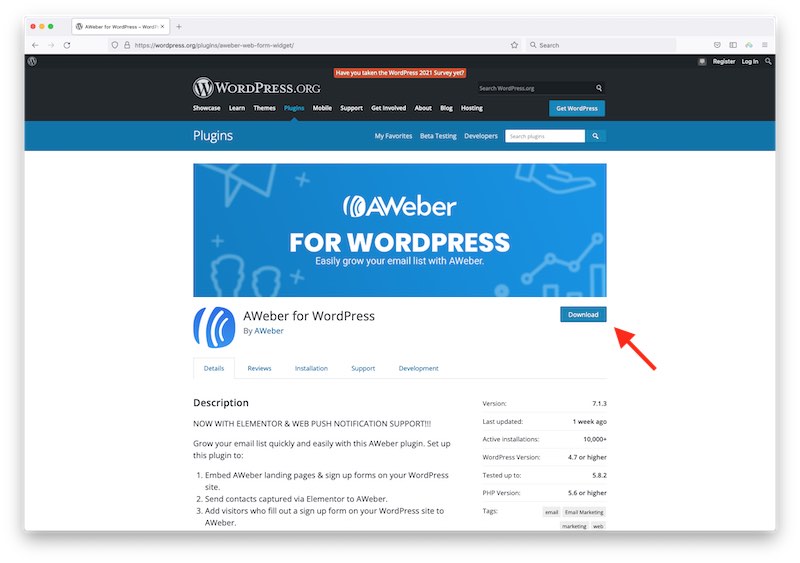
(I’ve found Gravity Forms to be a particularly good option for doing this.)
Site maintenance and security
Maintenance
Other than keeping content and products up to date, Shopify users don’t have to worry too much about site maintenance. All the technical aspects of running a website (software updates, hosting, server configuration etc.) are taken care of by the platform’s software engineers.
With WordPress, it’s a completely different story: you are in charge of ensuring that:
- you’re using the most up-to-date version of WordPress
- your server has been configured correctly
- your plugins and themes are all up to date.
Although some of this can be handled automatically, it’s still something you need to keep a pretty close eye on — if you end up with an out-of-date version of the WordPress software or a plugin, your site becomes much more vulnerable to being hacked.
Security
With hosted solutions like Shopify, the bulk of the responsibility for security lies with the companies who provide them.
In other words, it’s basically Shopify’s responsibility to ensure PCI-compliance where transactions are concerned and that your site doesn’t contain serious security vulnerabilities.
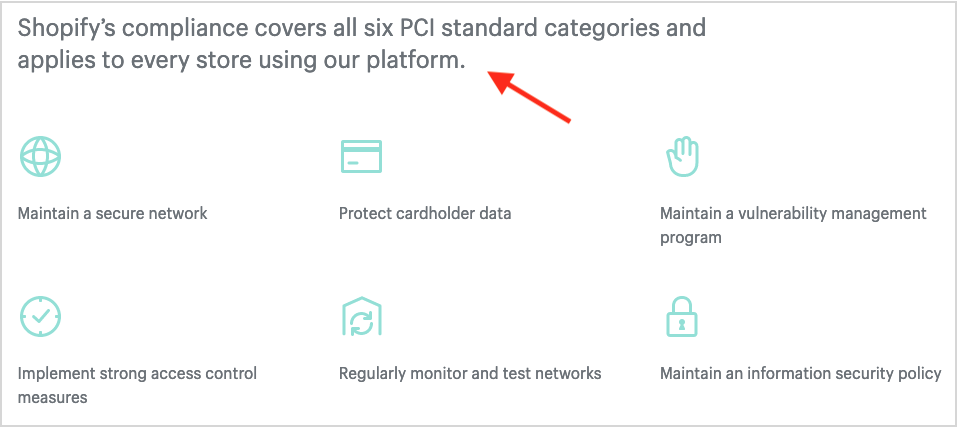
(PCI stands for ‘Payment Card Industry’ – sites that are PCI compliant meet the security standards of the ‘ Payment Card Industry Security Standards Council,’ process card transactions and cardholder data securely).
You’ll still need to stay on top of security basics when using Shopify — i.e., doing things like using 2 factor authentication and ensuring you don’t use a weak password — but the technical side of security is essentially the platform’s problem, not yours.
With WordPress, if you’re not paying a developer or agency to maintain your site, then the ultimate responsibility for all security belongs to the end user: you! This means it’s your job to ensure that your version of WordPress is up to date, along with any plugins or themes you are using.
Failure to keep on top of this aspect of site maintenance can make a WordPress site very vulnerable to being hacked (which can have extremely serious implications if you are operating in the ecommerce sphere).
You’ve also got to be aware that some WordPress themes and plugins can contain malicious code that can compromise the security of your site, so you need to be very careful about which ones you install.
And finally, you’ve got to ensure that you’re regularly backing up your site too.
(Helpfully, various plugins are available to help automate this process for you — and good quality hosting providers will usually back your site up automatically too).
All that said, a well-constructed, well-maintained WordPress site should be extremely secure.
However, I think it’s fair to say that Shopify sites are probably less vulnerable than WordPress ones, simply because there’s less scope for users to neglect security on their site — or add dodgy code to it! And, if something does go wrong, then Shopify’s team have a responsibility to help resolve the problem.
(That said, it’s still advisable to use a backup app on a Shopify store — while Shopify maintains disaster recovery backups for its whole system, it won’t always restore content for individual stores).
Finally, a quick note about SSL: a free SSL certificate is provided with all Shopify sites, meaning that your visitors are browsing your site on a secure connection. (You can of course install SSL certificates on WordPress sites too — but again, it’s your responsibility to sort that out.)
So all in all, for most users, the safer — and certainly easier — option from a security point of view is likely to be Shopify.
Control over your website’s content
If you use WordPress, what you put on your site is, generally speaking, entirely up to you.
But if you use Shopify, you’ll need to be aware that Shopify can remove content (or even your whole site!) if it conflicts with their acceptable use policies.
Admittedly, a company that you’ve paid to host your WordPress site could also take your site down if it didn’t like what you were publishing or selling — but in that scenario, you would have more options. You could move to a more liberal hosting provider, for example.
On a related note, it’s easier to get content out of WordPress than it is from Shopify, thanks to built-in export tools that facilitate the export and backup of content.
In Shopify, although you can export your product data easily (to CSV format), you can’t migrate static pages and blog posts – you have to manually copy and paste these somewhere, which feels rather antiquated.
(That said, there are paid-for apps available from Shopify’s app store — like ‘ExIm’ — that provide workarounds).
WordPress ultimately gives users more control over their content than Shopify; and, depending on the nature and size of your site, I wouldn’t overlook this issue.
While you’re here, download our free ecommerce e-kit
For a limited time, we’re offering our readers some excellent free tools. Sign up free to immediately receive:
- our online store comparison chart
- a downloadable cheatsheet on how to create an online store
- our SEO, blogging and ‘how to start a business’ cheatsheets
- extended free trials and discount codes for essential business apps
- our latest tips on ecommerce and growing a business
Creating multilingual and multiple sites
Many businesses need to create multiple versions of their website — in different languages, for different territories etc.
WordPress is really good for this sort of thing: you can use either the WordPress Multilingual plugin or the WordPress Multisite version of WordPress to create multiple versions of a website in a huge number of languages.
And some of the ecommerce plugins for WordPress (notably Ecwid and WooCommerce) can be configured to support multiple languages.
That said, Shopify lets you sell in multiple languages too and is getting increasingly good at facilitating this. Its ‘Shopify Markets’ tool lets you create and manage versions of your site in different languages and currencies and gives you a really simple way to go about international selling.
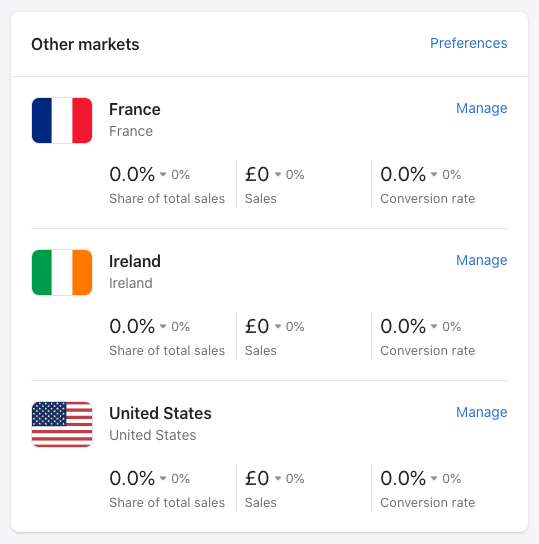
When you enable multi-language selling in Shopify, a language ‘folder’ is added to your custom domain. So you’ll end up with www.myshop.com/fr/, www.myshop.com/de/ etc.
If you prefer, you can also host translated stores on country-level domains — myshop.fr, myshop.ie etc. — which can bring some SEO benefits.
Although the multilingual features of Shopify are strong, you should note that you are limited to creating 20 different language versions of your site with the platform (and that not all site components can be translated).
But ultimately the multilingual functionality in Shopify will be absolutely fine for most merchants and certainly very easy for them to set up. Users with more bespoke requirements on this front may be better off with WordPress, however.
Mobile apps for Shopify and WordPress
If you’re somebody who likes to edit your website whilst on the move, you’ll be pleased to learn that this is doable with both Shopify and WordPress (on both iOS and Android devices).
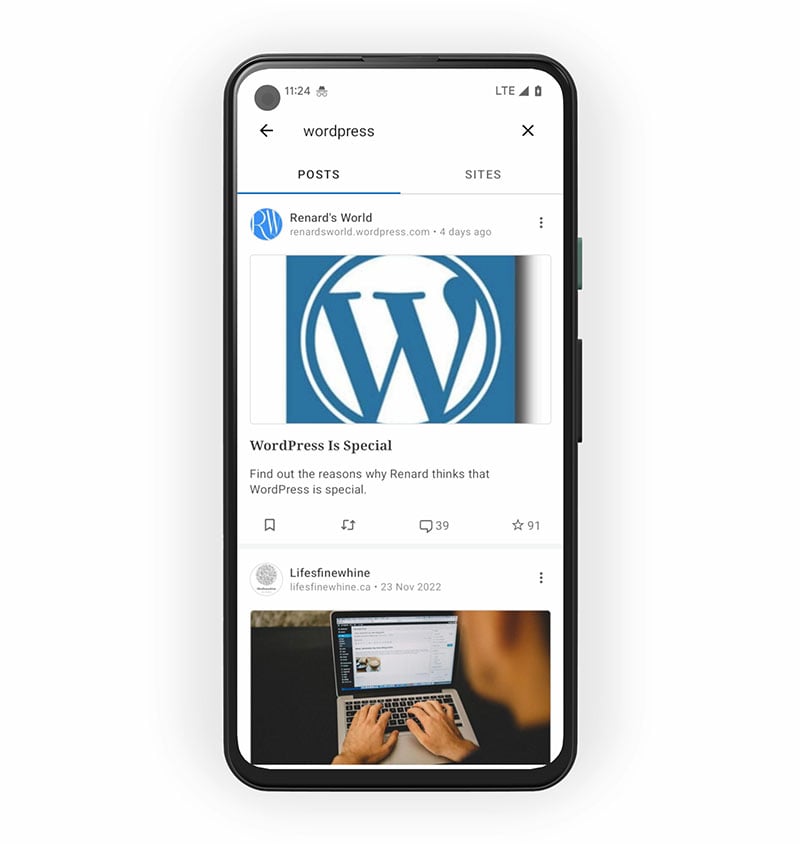
The Shopify app is more focussed on ecommerce than the WordPress one, allowing you to manage your products and follow up with customers. The WordPress app is more geared towards content management, allowing you to create and edit pages and posts easily on the move.
Another thing you’ll need to note about the WordPress app is that it’s designed to work with hosted WordPress (i.e., the version you use via wordpress.com). Although you can technically get it working with a self-hosted WordPress site, this will involve some configuration and the addition of the ‘JetPack’ plugin to your WordPress site.
Whether or not you can manage the ecommerce side of things on your phone for your WordPress-based store will depend on whether the ecommerce plugin you’ve used to build it provides an app for this purpose (for the record though, the popular options Ecwid and WooCommerce both do).
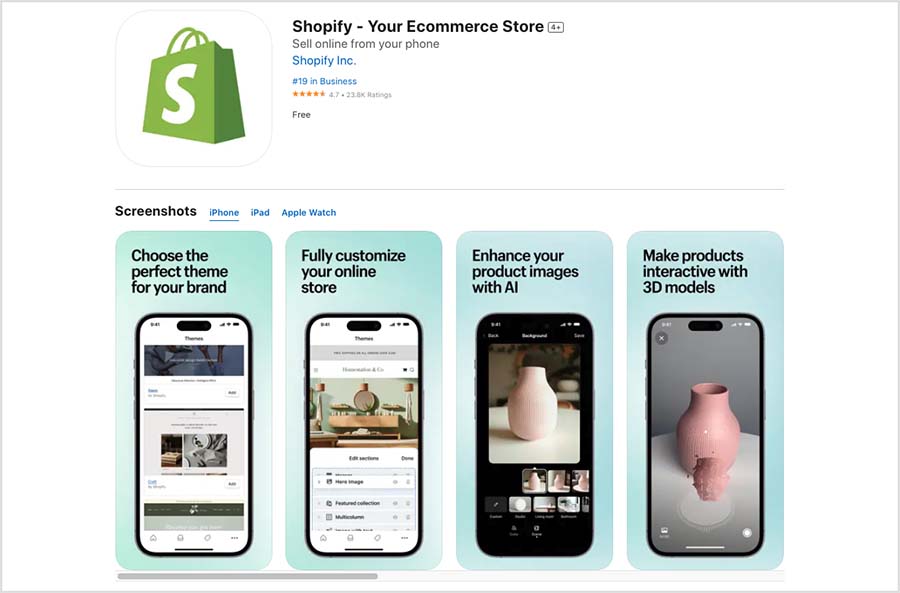
In addition to the main Shopify app, there are a few others which might come in handy — these include a ‘Point of Sale’ app for merchants who sell in physical locations, a logo maker, an order delivery tracker and an app for adding live chat to your store (‘Shopify Inbox’).
(On the Shopify point of sale front, I recently interviewed my friend Liz Jones to get her take on the pros and cons of Shopify POS. You can get her take in the video below.)
Both the main Shopify and WordPress mobile apps have been well received by users (with WordPress apps being rated slightly higher, though). Users have given the Shopify app ratings of 4.7 and 4.3 (out of 5) on the iOS and Google Play stores respectively; WordPress scores 4.6 in both.
Customer support
Customer support is an area where I think it’s fair to say that Shopify beats WordPress fairly comprehensively — particularly if you are building your site yourself.
When you buy a Shopify plan, you get customer service bundled with it. Live chat and email support are included on all plans, with phone support provided on Shopify Plus too. A wide range of online support materials is also provided to users.
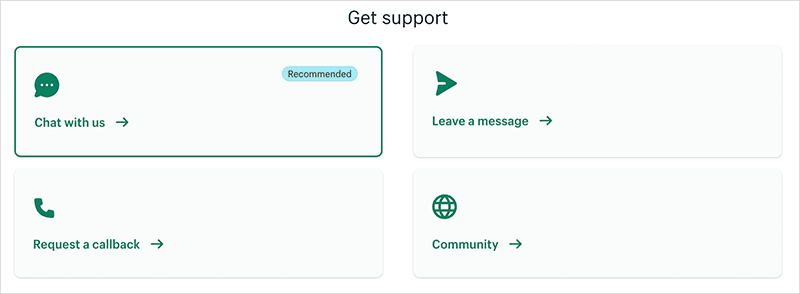
In terms of the languages that live support is available in, the 24/7 support is available in English; its availability in other languages depends on your territory. As for the online support material, Shopify’s help center is available in 18 languages.
All this means if something goes badly wrong with your Shopify store, there is somebody you can turn to.
(This is a particularly important thing to bear in mind if you’re building a site for somebody else. When you hand a Shopify site over to a client, so long as you’ve set things up right, you shouldn’t have to worry about providing ongoing support to them – that’s Shopify’s job).
It is worth noting however that accessing Shopify support can be a bit of a pain: you have to address your query to an AI chatbot first, which will then try to solve your issue before letting you chat to an agent. Personally, I find this approach to customer service quite annoying (and would prefer, as was until recently the case, to be simply given a phone number that I could call Shopify on).
As for getting support with WordPress, if you’re building your website yourself with the platform and run into difficulties, it’s not obvious where to turn to at all.
You may find yourself sourcing help from a variety of locations — for example WordPress forums, a hosting company, a plugin provider, a friend who knows a thing or two about WordPress etc.
In my view, to get adequate WordPress support, you ideally need to work with a WordPress designer or an agency specialising in WordPress development/maintenance and take out a support contract with them.
This does bring with it an additional cost, but on the plus side, it can give you a level of support that you are unlikely to ever receive on a non-Enterprise Shopify plan (face-to-face meetings, account management, Zoom calls, a more personal connection etc.).
If you’re intent on building your own store however, then it’s fair to say that (despite having to speak to a robot in the first instance!) customer support is more easily accessible from Shopify.
Shopify vs WordPress: the verdict
Ultimately, WordPress is a better-established and more flexible platform than Shopify. It’s got a significantly bigger user base and a much greater selection of themes and apps to choose from — given the right skills and resources, you can essentially build any sort of website you like with WordPress. That is not to say, however, that it’s right for every user— there are many occasions when Shopify will be the better choice, particularly for new businesses on a low budget, or users lacking web design skills.
If content production and management is a key concern for you – for example, if you wanted to run a sophisticated magazine site with a store on the side – then there is a LOT to be said for going the WordPress route. Its blogging functionality, content archiving and content management system are all significantly more flexible and sophisticated than Shopify’s offerings in these areas.
WordPress can provide an edge when it comes to search engine optimization too, because you can choose your own hosting and tweak your technical SEO setup to the nth degree.
But in many contexts, Shopify will simply meet the needs of ecommerce users better, particularly those without technical skills. That’s because it’s a tool that has been designed specifically to make building an online store straightforward — and it does a really good job of this.
Additionally, if you use Shopify, you’ll get customer support; peace of mind around security; and you won’t have to worry about the technical aspects of maintaining your website.
Ultimately, if you are new to the world of website building and absolutely determined to build your own online store, then I’d argue that Shopify is the easier, safer and quicker option. There is a steeper learning curve involved with WordPress and more configuration to worry about (especially where ecommerce is concerned).
If you have a good budget and an experienced developer, you’ll find that you may get something better with WordPress; a site that is more ‘bespoke’ in nature and more finely tuned to your needs.
But if you are intent on going the ‘do-it-yourself’ route, you are more likely to get more professional results with Shopify.
Downloads and trials
- If you are interested in using Shopify, you can get a special 3-month free trial of the platform here.
- If you are interested in using WordPress, you can download it free here.
I’ll leave you with some of the key pros and cons of Shopify and WordPress — and if you have any questions or feedback on either platform, do feel free to leave them in the comments section.
Shopify vs WordPress — pros and cons summary
Reasons I’d use Shopify instead of WordPress
- Shopify is easier and quicker to set up than Wordpress — you won’t face much of a learning curve when building a store with the platform.
- A lot of features that you have to source separately in WordPress are available ‘out of the box’ if you’re using Shopify – for example themes, ecommerce tools and payment gateway integrations.
- Hosting is included with the product — with WordPress, you have to sort this out separately and sometimes at a high cost.
- With Shopify, you don’t have to worry about the technical aspects of maintaining your site; if you use WordPress, you need to keep on top of this, or your site can become very vulnerable to being hacked.
- Shopify is largely responsible for the security of your website. If you use WordPress, security depends on how diligent you are in updating your software and theme.
- Shopify gives you sophisticated (and competitively-priced) email marketing tools out of the box — with WordPress you’ll have to source an email marketing solution separately and integrate it into your site manually (or via a plugin).
- 24/7 support is available for Shopify (via email and live chat, and by phone on Shopify Plus). By contrast, whether or not you can avail of support for a WordPress site depends largely on whether you have commissioned somebody to provide it.
- Shopify is arguably a better option than WordPress for users who require an elegant but simple website delivered quickly.
- GDPR compliance is arguably a bit easier with Shopify, because the company takes some responsibility for it.
- You can easily try out the product for free — with WordPress, you’ll need to arrange hosting and download/install software if you want to try it out.
Reasons I’d use WordPress instead of Shopify
- The software is open source and can be downloaded, in its entirety, for free.
- You can build ANY type of site with WordPress. It’s a more flexible platform than Shopify.
- A much wider range of templates is available for WordPress than for Shopify.
- WordPress comes with a more sophisticated content management system that, unlike Shopify’s, features autosave, revision history and archiving tools.
- A vast range of plugins — paid-for and free — is available to help you add functionality to your WordPress website. Although you can also add functionality to Shopify sites via apps, there is a more limited range to choose from.
- The number of variants and product options you can use (without installing an app) in Shopify is a bit limited – many of the WordPress ecommerce plugins give you more flexibility on that front.
- Depending on your site’s technical setup, SEO features in WordPress can be stronger than the Shopify equivalents.
- On a WordPress site, you have more control over your content — with Shopify, you’ll have to adhere to an ‘acceptable use’ policy and you may have trouble exporting some of your site content (especially where pages and posts are concerned).
- You can export pages and posts more easily in WordPress.
- WordPress can be a better option than Shopify for creating multilingual or ‘multisite’ projects (for users with advanced requirements or who need to build a site in more than 20 languages; otherwise Shopify is usually a good choice).
- The product has a longer history and a significantly larger user base than Shopify.
Alternatives to Shopify and WordPress
Shopify and WordPress are by no means the only options availablel when it comes to building a website or online store: there is a large number of alternative solutions that you can use.
On the self-hosted front, the best-known alternatives are probably Joomla and Drupal: very flexible platforms that host millions of sites worldwide.
With regard to hosted solutions, obvious alternatives include Squarespace or Wix, or indeed the hosted version of WordPress.
Big Cartel and GoDaddy are also worth a look if you’re on a really low budget — our Big Cartel vs Shopify comparison is available here, and you can read our Big Cartel review here.
If you’re interested in learning more about GoDaddy, we put Shopify head to head against the platform here and compare Wix and GoDaddy here.
A more dedicated hosted solution worth investigating as a serious alternative to Shopify is BigCommerce; this is a very well-specced ecommerce platform that comes with a lot of great built-in selling features. Like Shopify, it is primarily aimed at web design novices who are starting a new business.
You can check out our BigCommerce vs Shopify comparison review for more details on how BigCommerce stacks up against Shopify; our WooCommerce vs BigCommerce post and our BigCommerce vs Squarespace article are also of relevance here.
To find out more about all these ‘hosted’ solutions, you might like to check out our Wix vs Shopify comparison, our Wix review, our Wix vs Squarespace shootout, our Wix trial guide, our Squarespace review, our Wix vs WordPress comparison and our BigCommerce review.
Webflow, an interesting product that offers a similar level of design flexibility to WordPress — but with many of the advantages of a hosted solution — is also worth investigating. You can check out our Webflow review here and our Webflow vs Shopify comparison here.
And finally, you always have the option of selling on online marketplaces like Amazon, eBay and Etsy. Our Shopify versus Amazon shootout, eBay vs Shopify comparison and our Etsy versus Shopify article take a look at the pros and cons of using platforms like these rather than an ecommerce website builder like Shopify to sell online.
Comments (66)
For me it comes down to costs — with WP you pretty much need to pay everything upfront (server, theme, theme setup). With Shopify costs come after (those app monthly subscriptions can add up significantly). However, there are definitely more print on demand suppliers that integrate with Shopify better than with WooCommerce (WP) – Printful, Printseekers, Printify, Redbubble for example. So at the end the choice kinda reduces to start capital, and what kind of products you want to sell in your print on demand store.
Hi Chris,
Can I install a plugin in Shopify where web site users pay for watching a video, and how secure is it in comparison to Wordpress?
Thank you for your assistance,
Regards,
Jiselle
Hey Jiselle, yes you can do this no problem in Shopify. If your video files are less than 5GB, you can sell downloads of them using the free ‘Digital Downloads’ app. There’s also the option of using a a third-party app – just search the official Shopify app store for apps relating to videos and gated content tools — SkyPilot and LockSmith might work for you, I think, but do have a bit of a shop around. As for security, this shouldn’t be an issue – apps are vetted by Shopify before being accepted into the official app store.
Great article. Very in-depth, and I learnt a lot. Thanks!
Great article, thank you!
If you plan on creating print on demand ecom store, then Shopify is great for that. There are a lot of ecom and print-on-demand apps that connect straight to suppliers like Printful or Printseekers. However, if you plan on creating content first business, where your physical/digital product comes after, then I would 100% go with WordPress. Scaling SEO on Shopify is a pain in the ass (not a content friendly platform.)
Thanks Anthony. WordPress has the potential to give you a truly excellent SEO setup – but only if you really know what you’re doing from both a technical SEO point of view (or have a developer who does, which can be expensive). So I’d counter that Shopify’s SEO features are probably fine for most, especially those without large budgets for development.
Hi, that’s my question too, how does more advanced SEO using wordpress work, is there an example given? Thank in advance 😉
Hi there Mona, thanks for your query. If you want to tweak your WordPress’ site’s SEO, you’d typically look at investing in a very fast hosting service (typically involving a dedicated machine); editing your theme code so that your template had the best chance of meeting Google’s Core Web Vitals requirements; using image optimization plugins; using ‘lazy load’ plugins; and using categories and tags in smart way. That’s just a few suggestions however! Hope the info helps though.
Wow Chris…this article blew my mind and helped me make the educated decision to go with Shopify. Thank you for spelling out the differences and thus, saving me hours…err…make that months of frustration as a very limited techy.
Great article, well researched and written. A very useful comparison.
Thanks Ruben – glad you found it helpful.
Not sure where you are getting your WordPress costs from.
There are far cheaper alternatives to the hosting sites you mention. Hundreds of them are $4 / month.
Couple that with free templates and woocommerce, you’re looking at $48/yr.
Thanks for the feedback Rob. I’d respectfully point out that if you look at my comments on WordPress costs, you’ll see that I’ve stated that you can get shared hosting for just a few dollars a month, and the indicative costs are for those wishing to build a *professional* WordPress site. It certainly is possible to put together a WordPress site on the cheap, but it won’t necessarily be suitable for serious business applications.
Particularly in an era where Google is placing a huge emphasis on site speed and Core Web Vitals performance metrics, decent managed hosting – which can be very expensive – is a must for a lot of businesses. Combine that with site maintenance / support services, development costs and premium plugins, and WordPress costs can certainly mount up. Plenty of organizations we do business with spend hundreds of dollars (if not more) on WordPress each month.
That’s not to say that Shopify is going to work out cheaper – the point I’m making is that while it’s tempting to think of WordPress as an entirely free or low-cost option, the reality can be very different, particularly if you’re trying to build a high-end website.
Hope this helps! Cheers Chris
Super thorough article! Thank you…Just wondering about cost of sale differences. Shopify take 2% of your sale right? WordPress? So, if you’re selling a lot of products, this could be a big consideration too?
Hi Catherine! If you use Shopify Payments — Shopify’s own payment processor — there are no transaction fees (although you’ll still be charged credit card fees which vary depending on your plan). As for WordPress, whether or not you’d encounter transaction fees would depend on the specific ecommerce plugin you used to sell online — some are more generous than others in that regard. It would be a case of looking at Ecwid, WooCommerce etc. and comparing their fees. Hope this helps?
Hi Chris,
Very informative article. I am struggling to decide still.
I am not a typical beginner, and I know how to create a shopify store. But my main concern is the look and feel of the store – WordPress themes are just fantastic! I can learn how to put up a WP store by going through a few tutorials.
I do not have the budget to make too many changes, pay for maintenance, enhancements and all that right now. I don’t have the budget to go around figuring if my WP theme or plugin has a malicious code or not. I do have a hosting that I bought with BlueHost already.
I want my website to load under 1 second, so I’m willing to invest for that.
What do you suggest I go for? WordPress or Shopify?
Thanks.
Hi there Prabhu, it’s a tricky call! But my personal view is that to get a super fast, 100% secure WordPress site, getting a developer involved is always the best option – both in terms of getting the technical aspects of the build right and then maintaining it ongoing.
If you are intent on taking a ‘DIY’ approach, then I feel Shopify is the safer bet. (But that said, to get super fast page load times on Shopify, you may still need some professional help).
I hope this helps?
So helpful!! Just started my free trial of Shopify.
Glad you found the comparison useful Harveer – hope your new project is a success.
Awesome, great article, thank you. I’d like to mention that Shopify apps are pretty expensive and you will need a lot of apps because Shopify themes (free and paid) are not really state of the art. For example, there are apps helping you creating a nice option/variant section on Shopify that cost $50 per month, which is ridiculous. So if you need more than standard functions, you have to pay hefty prices for a lot of apps. Another thing I realized about using Shopify is that the customer service is not really knowledgeable. Very often they could not answer my questions. I think Shopify is a nice solution for absolute beginners but, even then it’s overpriced.
Thanks for such a comprehensive comparison! 🙂
No problem Satya, I hope it made the WordPress vs Shopify decision easier for you. Thanks for your feedback!
Thanks for the great article. Right now Shopify allows you to integrate the robust ecommerce backend solution to wordpress using the BUY NOW button. This is a solution I am leaning into since I know Wordpress providers a much better website building and maintenance experience than Shopify. Plus Shopify charges some pretty large fees as you start growing your business.
I’m curious, if I want to sell digital downloads on a subscription basis, what would be the easier platform? I am a musician, once a month I would like to offer paid subscribers an exclusive digital download of new music. I want it to be automated – so I upload the new music and an email goes out to my paid subscribers with the link to download it. They have already paid – either a monthly subscription or a yearly once (perhaps at different rates). Which platform do you think would be easier to set this up. Any version of this same idea would be similar to audible – every month, paid subscribers would get a credit for a free audio book (in my case a music download), but you can also buy direct digital products from the store. Any thoughts? Thank you for the article, it was helpful.
Hi Prosad, I think something like Patreon might be a better fit for a music projecting involving subscription? Have you looked into that?
Hi Chris, I have looked into it – I like the idea of minimizing fees and having control and independence, but you might be right. Thank you for taking the time to respond.
Can i shift my site and data any time from shopify to wordpress..??
Hi, yes you should be able to do that – you can export your Shopify product data into a CSV file and then either copy and paste your page and blog content into WordPress, or use a dedicated app from the Shopify app store to do so (like Exlm – https://apps.shopify.com/exim-export-import-pages-blogs-theme-settings). Cheers!
I am a start up and have less products or sku to start with.. should i go with wordpress or shopify?
Hi Aakash,
If your budget is low, your needs simple and your product numbers small, there’s a lot to be said for Shopify – it’s a good way to try things out without committing to big spend on developers or WordPress maintenance.
As your business develops you may find that you need additional functionality that’s not provided by Shopify – in which case a move to WordPress may make more sense.
Hope this helps a bit.
This is the response I needed to make my decision as well. Thanks guys!
You didn’t cover transaction costs which can add up?
Thanks for the feedback Mark, I’ll definitely dig into those in more depth in the next update of this post! Quick thoughts: how much they add up will depend on your chosen payment processor (or ‘payment gateway’). If you use Shopify Payments, the built-in payment gateway, there aren’t any transaction fees to consider — but using a third-party payment gateway with Shopify will mean that transaction fees will be applied (0.5% to 2% depending on plan). As for WordPress, whether or not you’ll encounter transaction fees depends entirely on the e-commerce integration and/or payment gateways you choose for your site. These vary considerably depending on product used. Hope that helps a bit?
WOW! An excellent article. For a newbie, this was so clear and so well developed. Thank you.
No probs Jane, glad you found it helpful!
Great article. As someone who has had a Shopify site there is one factor that people often do not take into consideration when deciding between Shopify or Woo Commerce is the blog function. A blog is a blog or so the thinking goes. Sadly that is not the case but if you elect to go with Shopify you won’t find out until it’s too late. You won’t find out that your blog cannot handle threaded replies, you won’t find out that you won’t even be notified of comments to your blog through your admin unless you’re watching it 24/7. You won’t find out that the spam filters on a Shopify blog are totally inadequate. Ok, you can always install something like Discqus but it’s not much of a solution as it is a turnoff to users having to register. Check out this long-running thread on the problems with a Shopify blog and you will see what I mean, and that is just one of many similar threads. https://community.shopify.com/c/Shopify-Discussion/Blog-comments/td-p/689392/page/3
Very well written, thank you. I am in the early stages of starting a home business and with a background in web design was still deliberating over a quick and easy Shopify e-commerce site over a custom Wordpress site. Happily I stumbled across your article which reinforced my decision that a well thought out, SEO optimized Wordpress site is worth the extra labour at the onset 🙂
Thanks for the lovely feedback Alice! Yes, if you invest the time (and money) into a WordPress build, you can get some truly great results in the SEO department. The only thing I’d say is that it’s important to get somebody with the right technical know-how involved (that might of course be you!) as there are a lot of moving parts to consider when it comes to SEO — hosting, image optimization, AMP, on-page SEO, 301 redirects and so on. A lot of this is handled pretty well out of the box by Shopify, but with WordPress you will need to ensure that whoever is building your site has a good amount of knowledge about technical and on-page SEO.
Well writtten comparison. I am at the stage of deciding between Shopify and Wordpress. It is hard to make a decision without knowing everything around it.Is it difficult to be one’s security manager for Wordpress? For example, to do the updates for security purpose, I assume it should not be. With basic skills, that should work.My impression from the Shopify is that, it is more expensive (elastic customer ;). Well, if there is a better choice in the market, why not? How much does it cost to maintain a website for a small company using Shopify vs. Wordpress assuming that the Wordpress template is around 76$? Is it possible to provide some cost estimate?
Thanks,
Thanks Baktash! In terms of security, there are various tools and plugins available to help you do it yourself, and if you use a good managed WordPress hosting service, they’ll usually alert you to security issues too. The key thing is generally to keep any plugins and themes up to date, and make sure you’re always using the latest version of WordPress. You will nearly always get better security by using a dedicated security manager, however. This doesn’t have to be too expensive – contact us via our contact form if you’re interested in a chat about this.
Hi,thanks for your comparison.What if I have a shop on shopify but would like to switch to wordpress? Is there any way I can save my brand (domain/content/blog posts/social media links) or do I have to start from scratch using wordpress? Is there some kind of transition possible? I’m not happy with my saas and would love to make a switch as I feel trapped in those monthly costs but….what with my content, all those articles from my blog on my shop site linked to my facebook/instagram, my rank on google…
Hey Nadia, thanks for stopping by this post and for your comments. Ok, so if you were to switch to WordPress, you (or your developer) could migrate all your blog posts and products across to WP. Depending on the size of your site, it’s definitely doable. What you’ll need to work out is whether it is worth doing all that – and whether you’ll still end up with monthly costs using WordPress (hosting, themes, plugins, developer-assisted security checks) etc. Hope that helps a little?
Is shopify good if you want to affliate for amazon?
Hi Shanele, you can integrate Shopify with Amazon in various ways – some details here: https://www.shopify.co.uk/blog/how-to-sell-on-amazon-using-shopify
I’m not sure it’s necessarily the best option for affiliate work however – it’s more about selling direct. Usually you use blog content to generate affiliate commissions. Shopify does come with a blogging feature but there are other more ‘content-focused’ platforms out there which would be a better fit for affiliate work.
As a developer of custom themes and plugins WordPress is a trillion times better than Shopify.
I have had one Shopify store for a year and have been using Wordpress for another.
At first Shopify looks like it’s easier but you can easily find yourself scratching your head when trying to make the smallest of changes. Before you know it…the solution lies within a monthly subscription to an add on.
My Wordpress store can be modified easily and what ever plugin I need can be sourced for free. Online "how to" guides are more abundant and are more up to date. Usually when I’d finally find a good guide for Shopify, the platform has been changed and again I am back to square one.
Cost wise, I am not even sure if it’s even worth comparing. Unless you really go hard on paid plugins and templates on Wordpress….you will struggle to reach the monthly cost fee of Shopify plus monthly add ons.
I just closed my Shopify account and already am miles ahead with Wordpress.
thank you!! for your helpful comment!
I am currently an owner of both a Shopify and WordPress websites.
Your cost section is actually far off.
Shopify cost a lot more as the most useful plugins cost too much and they are in monthly subscriptions.
Also Shopify themes cost $180 and up each which is just ridiculous. I can already buy 4 premium WordPress theme with that money.
I am now on the process of converting my one Shopify website to WordPress again as in WordPress I just need to pay my hosting.
Thanks Eugene. Understand where you’re coming from, but I think the article makes clear that we’re talking about a ‘how long is a piece of string’ situation with regard to Wordpress costs – there’s a lot of variables involved.
Agree with you though re: the Shopify apps, the can increase costs rather a lot for Shopify users, and I’ll aim to make that clearer when I next update the comparison. Many thanks for your feedback.
Shopify sucks.. it’s best comparison is MS Access … easy enough to use but so easy to break, very inflexible, very few templates, and without a rollback on pages it’s terrible to turn over to a client.
which one are you using?
We use Shopify for some projects, Wordpress for others 🙂
This is an amazing article! Put together very well. Kudos to the author for the effort and time they put in
Very nicely and detailed explanations and comparison.
Fantastic article, I agree the flexibility of Wordpress is hard to beat, but setup-wise, Shopify easily wins. I found a plugin that allows for users to easily embed Shopify on their Wordpress site… Best of both worlds!
Hi John/Chris, All your comments are very interesting and inspiring. I’m researching for a client on whether to switch from Shopify to Wordpress for other brands.
For the embed John mentioned, it means paying for 2 sites (Shopify + Wordpress) instead of one, a Shopify site and embed it with Shopify WP plugin. Am I right?
Hi Agnes, yes to use Shopify and WordPress together you would have two sets of costs — your Shopify subscription and any fees associated with WordPress (hosting, development etc.).
There are lots of ways you can connect the two platforms — the simplest is via a Shopify ‘Buy Button’ — but third party plugins exist too that add more features (for example ShopWP).
so comprehensive, thank you
Not even close…..Wordpress is the best cms…..and this is coming from a Drupal developer
Thank you so much for this article. Very thorough and helpful. Still debating whether or not to go with WordPress, but the material provided here is really good insights.
WordPress is much better than Shopify.
Such a hard comparison isn’t it. I’ve loved using Shopify for my e-commerce site for the last few years, but I’m in the process of setting up a Blog and I’m leaning towards Wordpress for that option. Wanted to combine a blog AND e-commerce store- but totally torn between the two.
Thanks for the comment Amy! To be honest if you have an existing and successful Shopify store you should probably be ok using the built-in blog to generate more inbound traffic. Whilst bit as sophisticated as the WordPress equivalent, it handles the basics well and with a bit of custom coding (or the right template) you should be able to present your blog content nicely on other parts of the site.
Thank you very much for the explanation and for having a scientific comparison approach.I have only one remark if you can make the summary in a table form to summarize main strengths and weaknesses of each tools.Thank you.
A most thorough explanation of my question, thanks so much